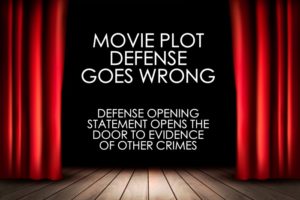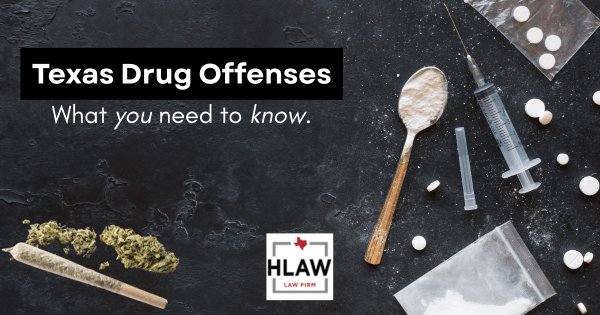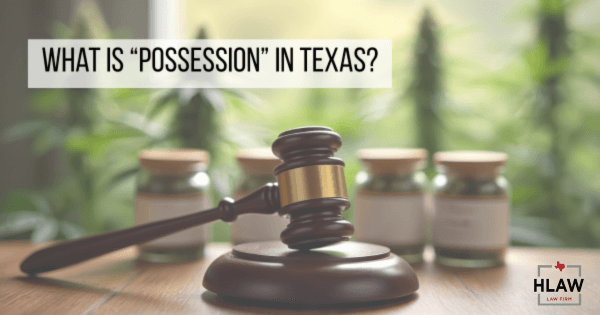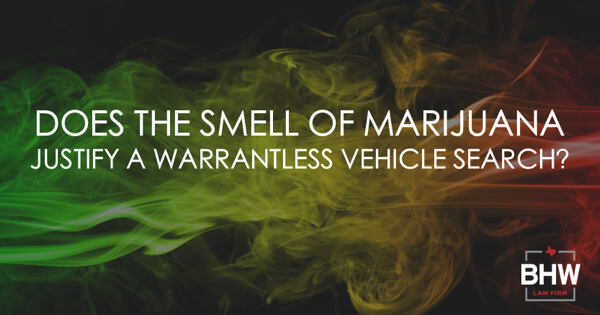The Fugitive, The Doctrine of Chances, and The Texas Rules of Evidence Collide: CCA Reviews a “Movie Plot” Defense Strategy
 Dabney v. State (Tex. Crim. App. 2016)
Dabney v. State (Tex. Crim. App. 2016)
Have you ever seen a movie like The Fugitive or Double Jeopardy where the main character finds himself in suspicious circumstances, only to be arrested and convicted, with the rest of the movie focused on proving the main character’s innocence? The defense counsel in Dabney v. State used this sort of analogy as the theme of his case to the jury—that the defendant was trapped in a bad movie plot and wasn’t actually guilty of any crime.
A Mystery Meth Lab Was Constructed at the Defendant’s Home
Defense counsel made a memorable opening statement at Ronnie Dabney’s trial. Dabney had been arrested and charged with manufacturing meth. Defense counsel told the jury that the evidence would show that the meth lab found on Dabney’s property was set up by others, without his knowledge, and that Dabney arrived home mere moments before law enforcement arrived to discover the lab. Defense counsel offered a movie-plot defense theory, “Have you ever seen a movie like The Fugitive or Double Jeopardy where a person is found in suspicious circumstances and [they] arrest and convict them?” The defense added, “Ronnie Dabney has been living this movie where he’s innocent, found in suspicious circumstances, and he’s trying to prove himself not guilty.”
In response to the movie-plot defense theory, the State filed a brief arguing that it should be permitted to present evidence of a previous incident years ago, in which Dabney was present when a search warrant was executed on his property and an active meth lab was found. The State argued that the opening statements about the movie-plot amounted to a defensive theory, where evidence or mistake is at issue, worthy of a rebuttal argument supported by rebuttal evidence allowed under Rule 404(b) of the Texas Rules of Evidence.
Before trial, Dabney submitted a request for “notice” of the State’s intent to use evidence of past “extraneous” offenses under the Texas Rules of Evidence 404(b). The state failed to give proper notice of any 404(b) allegations. However, after hearing the defense opening statement, the State argued that the similarities between the case at bar and a previous case “rebutted [Dabney’s] defensive theory of accident or mistake” and requested permission to use the previous incident as 404(b) evidence to show the absence of mistake. The judge concluded the evidence of the previous crime was admissible. During closing remarks, the State averred, “[Dabney is] the unluckiest man in the world…[he] wants you to think [he] is Harrison Ford from the Fugitive…[with] a confluence of unfortunate events that frame him…but…common sense says it’s not an accident if it has happened twice…it’s the Doctrine of Chances.” Ronnie Dabney was found guilty of manufacturing meth and the jury sentenced him to 30 years imprisonment.
Dabney appealed to the Second Court of Appeals arguing the State failed to give proper notice of intent to use evidence of Dabney’s past crimes in its rebuttal argument under Texas evidentiary rules. The Fort Worth Court of Appeals reversed the trial court’s judgment, holding that the evidence of Dabney’s past crimes was inadmissible without proper notice from the State. Dabney v. State, No. 02-12-00530-CR, 2014 Tex. App. LEXIS 11496 (Tex. App.—Fort Worth, Oct. 16, 2014) (mem.op., not designated for publication). The State petitioned the Court of Criminal Appeals for review, arguing that notice is not required for rebuttal evidence because defensive theories cannot be predicted ahead of time. Dabney asserts that the State has a duty to anticipate all defensive issues that may come up in rebuttal.
The Court of Criminal Appeals considered the following issues (among others not discussed in this article):
(1) Did the court of appeals incorrectly add a “notice requirement” for rebuttal evidence?
(2) Did the court of appeals improperly ignore the overwhelming evidence of Dabney’s guilt?
Texas Evidentiary Rules Regarding Other Crimes, Wrongs, or Acts
Rule 404(b) of the Texas Rules of Evidence states
evidence of crimes, wrongs, or acts is not admissible to prove the character of a person in order to show action in conformity [of the crime being prosecuted].” “However, [such evidence] may be admissible for other purposes, such as…intent, preparation…knowledge…absence of mistake or accident, provided that upon timely request by the [defendant], reasonable notice is given in advance of trial of intent to introduce in the State’s case.
A defense opening statement can open the door for the admission of extraneous-offense evidence to rebut the defensive theory presented in opening statements. Bass v. State, 270 S.W.3d 557 (Tex. Crim. App. 2008).
The Doctrine of Chances tells [the court] that highly unusual events are unlikely to repeat themselves inadvertently or by happenstance.” LaPaz v. State, 279 S.W. 3d 336, 347 (Tex. Crim. App. 2009).
Rule 404(b) is a rule of inclusion, rather than of exclusions—it excludes only evidence that is offered solely for the purpose of proving bad character and conduct in conformity with that bad character. Id. at 343.
The CCA Holds that the Court of Appeals Improperly Added a Notice Requirement for Rebuttal Evidence
Here, the CCA reversed the decision of the court of appeals, holding that the court of appeals improperly added a notice requirement for rebuttal evidence and ignored the overwhelming evidence pointing to Dabney’s guilt. Because of the exception to the notice requirement when the defense opens the door to rebuttal evidence by presenting a defensive theory that the State may rebut using extraneous-offense evidence, the evidence of the prior crime was proper at trial, even without notice to defense beforehand. “To hold otherwise would impose upon the State the impossible task of anticipating, prior to the beginning of any trial, any and all potential defenses that a defendant may raise.” Also, there was no evidence that the prosecution acted in bad faith, or attempted to willfully avoid a discovery order. “Under the Doctrine of Chances, [Dabney’s] defense that he found himself in an unfortunate, highly unlikely situation becomes less credible when presented with evidence that he has been found in the exact same situation before.”
In sum, [Dabney] presented his defensive theory in opening statements and the State could use extraneous-offense evidence to rebut this theory in its case-in-chief, instead of waiting until the defense rested. Bass at 563. Defendants who are planning to use the “movie plot” defensive theory in the future, must be prepared to have the theory tested in front of a jury with 404(b) rebuttal evidence of other crimes, wrongs, or acts.










